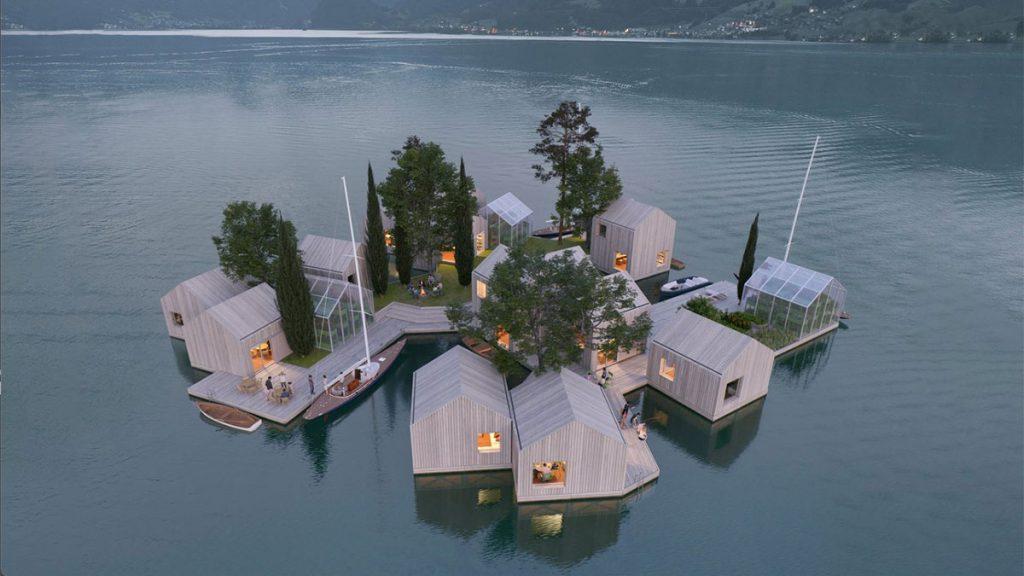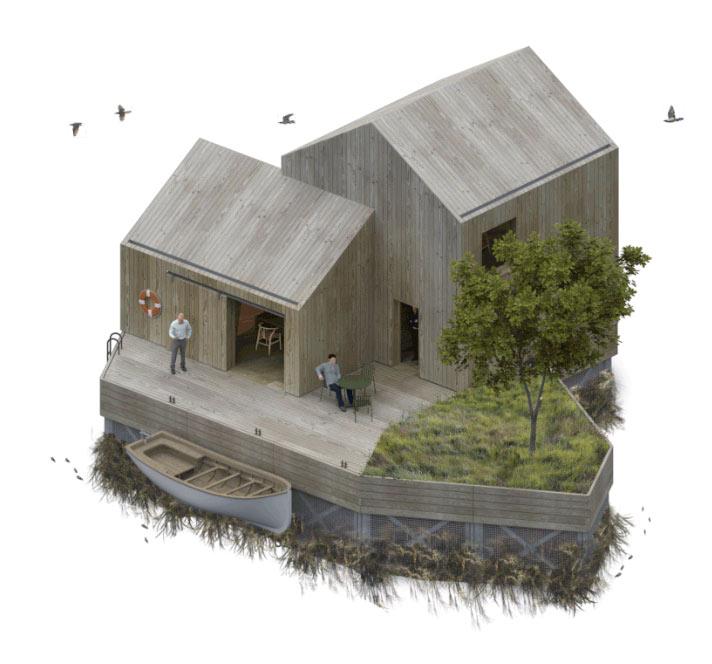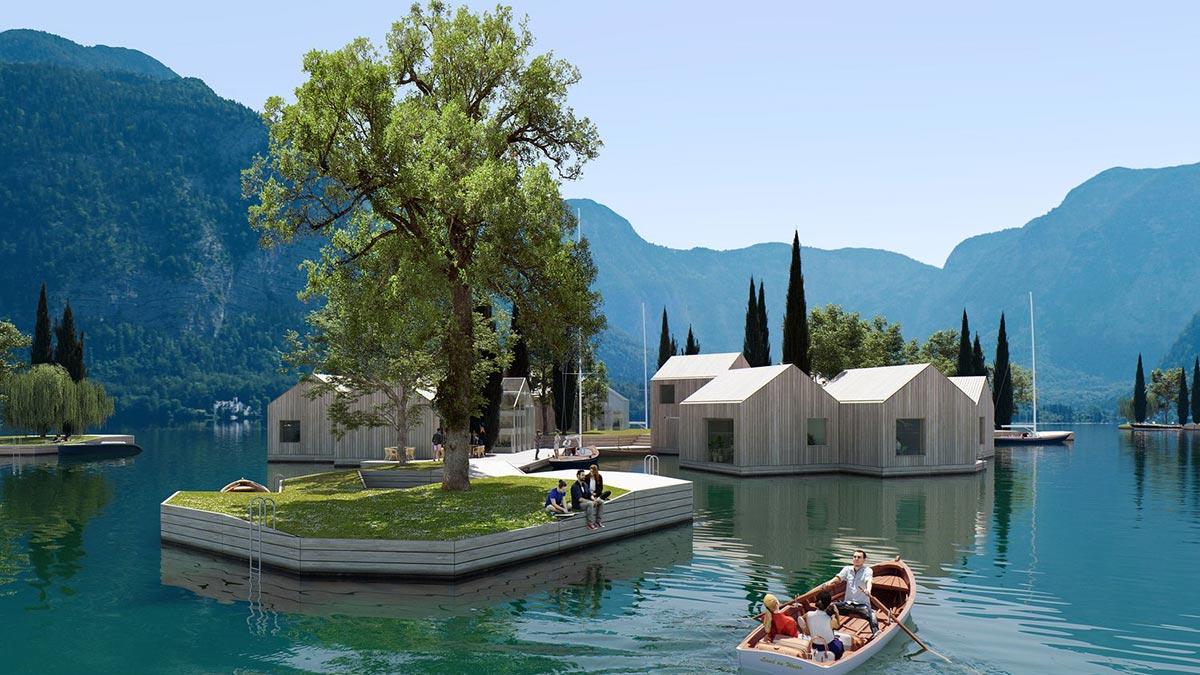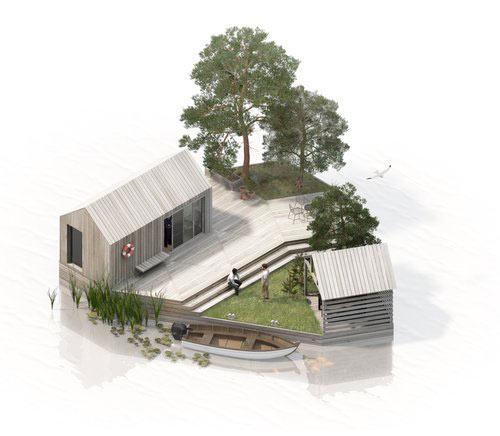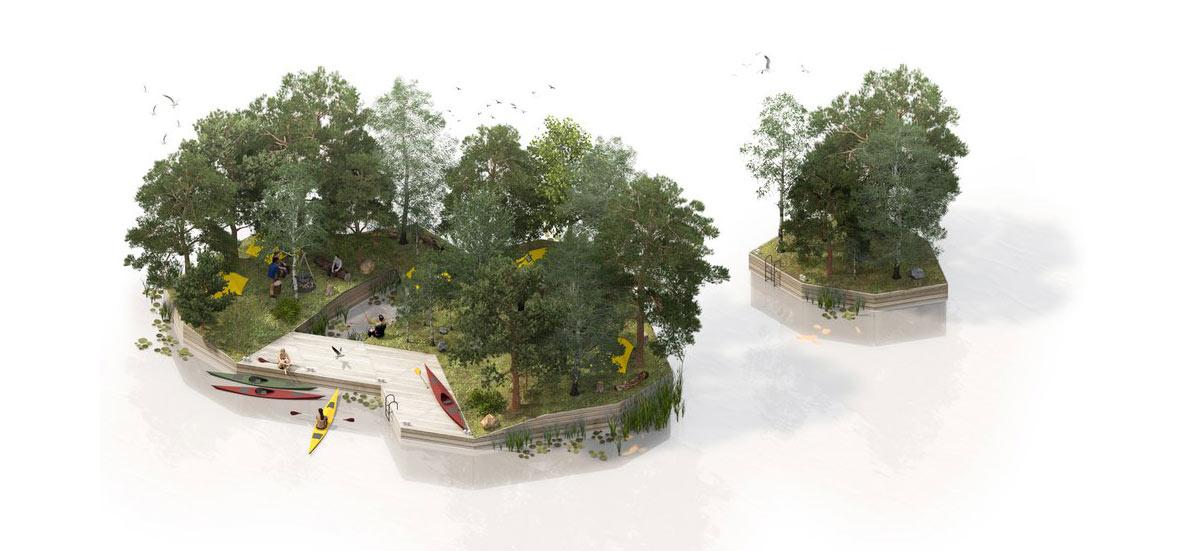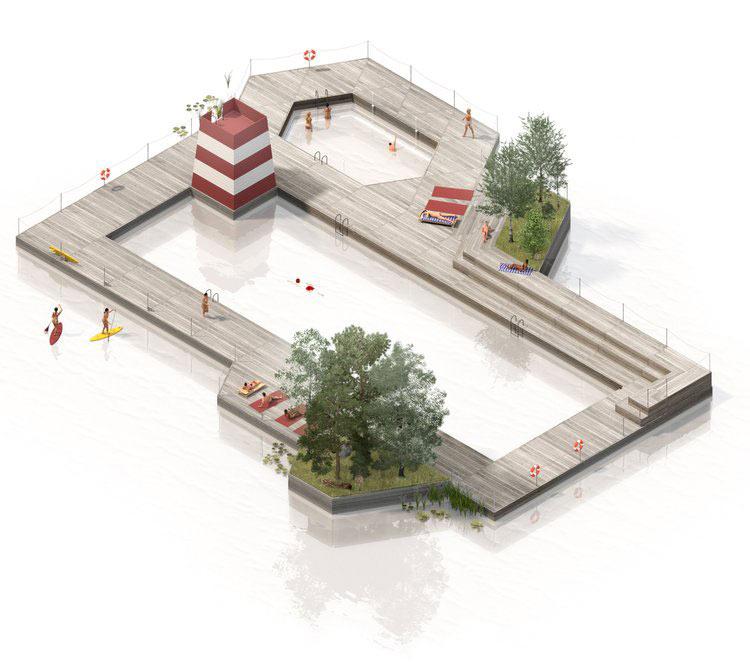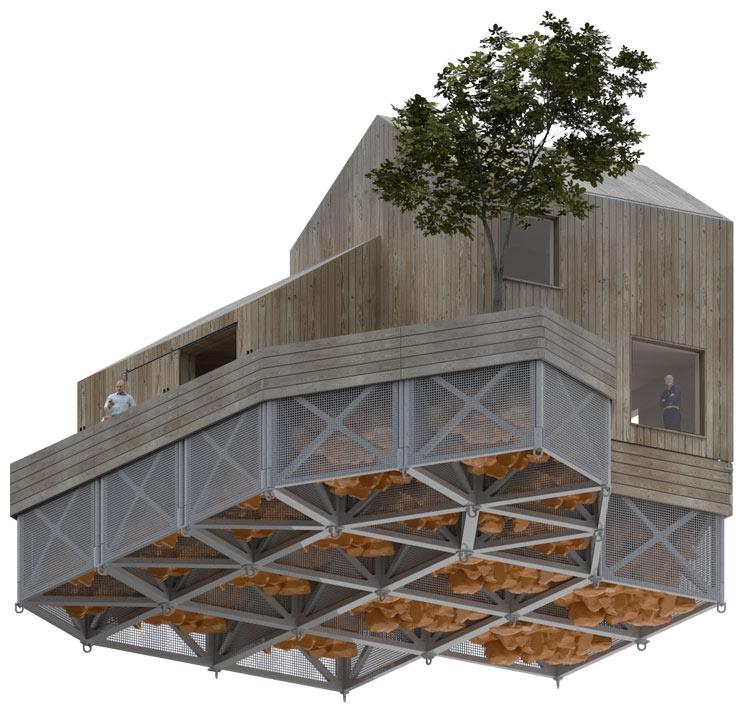A village on the water
As sea levels rise and cities sink, there is a growing need for new solutions and new ways of thinking. Developed by a team of innovators, the Land on Water prototype paves the way for serial construction of sustainable buildings on water.
Climate change is making the polar ice caps melt at increasing speed. Projections by climatologists suggest that average sea levels around the world will rise by more than a metre by the year 2100 if countries continue to burn coal, oil and gas at the present rate. The sluggishness of the climate system also means that levels will continue to rise for several more centuries even if emissions are eliminated, so coastal areas will already be under pressure in the coming decades.
A rising number of city planners around the globe are incorporating water into their designs – and not just in vulnerable coastal regions. A prime example is Copenhagen Islands, a park built on floating islands off the shore of the Danish capital. This project was designed by Australian architect Marshall Blecher who, together with Magnus Maarbjerg, founded Maritime Architecture Studio (MAST) in Copenhagen in 2021. Building on water is their special area of expertise: “We work with water to create open, innovative and sustainable spaces.”
Floating cities 4.0
MAST has unveiled a new modular system for building on water. The pilot project is called Land on Water and offers a flexible, climate-resistant solution for incorporating water into urban development. This idea was the brainchild of Austrian construction entrepreneur and creative thinker Hubert Rhomberg, who – together with concept and venture studio Fragile –initially developed a timber solution with a rubber coating.
The system offers a sustainable and highly flexible solution for building almost anything on the water.
Architectural firm MAST
“Even though 71 percent of the Earth’s surface is water, we humans still try to extend our already threatened lands in conventional ways. In times of rising sea levels, we need to rethink how and where we are going to live,” explains the managing director of Rhomberg Holding.
The architects professionalized the system and took it to the next phase, using reinforced, recycled plastic for the modules instead of wood. Its flat components are easy to transport and, as the architects explain, can be assembled anywhere in different configurations: “The system offers a sustainable and highly flexible solution for building almost anything on the water; from floating houses in Seattle to floating campsites on Oslo fjord.”
A sustainable system for everyone
The structures are recyclable and self-sufficient. As Hubert Rhomberg explains, they will require far fewer resources than previous systems. Recycled floating materials are to be sourced locally if possible. Lukas Kauer, co-founder of Fragile, adds: “The modules are manufactured centrally, dispatched in flat-packs and filled with the floating materials on location. In this way, transport is cheaper, more efficient and, above all, more sustainable.”
The beauty of the system is its simplicity. As Rhomberg explains, the basic version can be put together without any specialist expertise and with minimal capital: “While the system can be used as a DIY solution in very poor areas, it is also possible to build luxury versions of exceptional quality.”
While the system can be used as a DIY solution in very poor areas, it is also possible to build luxury versions of exceptional quality.
Hubert Rhomberg, project initiator and managing director of Rhomberg Holding
In both cases, this means that local communities and social structures can form on the water. As with Rhomberg’s off-the-peg timber high-rise building, having a strong network plays a key role here too: “The parts are available around the world via a platform that is also used to share knowledge and best practices.”
Learning from past mistakes
As well as having energy self-sufficiency, the floating settlements can grow organically and regenerate themselves like in the Metabolism model of thought. They aim to offer an alternative to the currently planned large-scale projects that, as the MAST architects point out: “repeat the many mistakes that urban planners made in the mid-20th century. Current solutions based on polystyrene-filled concrete foundations and plastic floating bodies that are difficult to transport and terrible for the environment.”
While steel and concrete foundations are usually treated with toxic antifouling paints, Land on Water provides an ideal environment where fish, crustaceans, mussels and seaweed can all thrive.
Architectural firm MAST
What is more, the plastic-based module system promises to be far more environmentally compatible than previous systems. “While steel and concrete foundations are usually treated with toxic antifouling paints, Land on Water provides an ideal environment where fish, crustaceans, mussels and seaweed can all thrive.”
Reviving an ancient system
This approach was inspired by gabion construction, an ancient technique whereby large wicker baskets were filled with stones and earth to create sturdy ramparts. While the shell eventually rotted, the strongly rooted structure remained in place for a long time, providing effective protection from flooding.
This concept was turned on its head for the modular floating elements. Here, the cages are filled with upcycled floating materials based on the weight of the structure they need to support. The system can be adapted flexibly by adding or rearranging these materials to respond to any structural changes on the floating foundation.
The project initiators are looking for partners to work with them on developing innovative and sustainable floating projects. Based in Copenhagen’s shipyard district, MAST has its own factory hall where shipbuilders and engineers can put the architects’ creative ideas into practice. Its Dip Zone – a portable wooden harbour pool – is used by the locals as a paddling pool in the summer and as a plunge pool for saunas at the harbour quay in the winter.
Text: Gertraud Gerst
Translation: Rosemary Bridger-Lippe
Visualizations: Kvant-1, MAST
